52 Weeks of Historical How-to’s, Week 49: How to Write a Whaling Report
When you are known as the whaling archivist here at Special Collections, it can be difficult to come up with a historical how-to which will not horrify or disgust readers. How to skin and transport a seal? No, too gory! How to remove the eye of a sperm whale? Hmmm, it reads like a recipe, but people might get upset. How to extract the ear plugs from a whale? No…just no. Do you see my dilemma? So, after rummaging through the collection, I have found a historical how-to that doesn’t involve any gore and can even help you with your report writing. Here it is. How to write a successful (whaling) report!
I will first give an explanation on what my role at Special Collections is. We are lucky enough to house material from the Sea Mammal Research Unit which includes records relating to the whaling industry in the Southern Oceans during the 20th century, fisheries and sealing material. It is my responsibility, as the archivist on this project, to catalogue this material and make it available online for researchers to study. So far I have discovered a huge variety of documents, from the catch reports from the factory ships and the factories on South Georgia to the research papers from the Discovery Committee who had the responsibility to study if whaling was a sustainable industry.
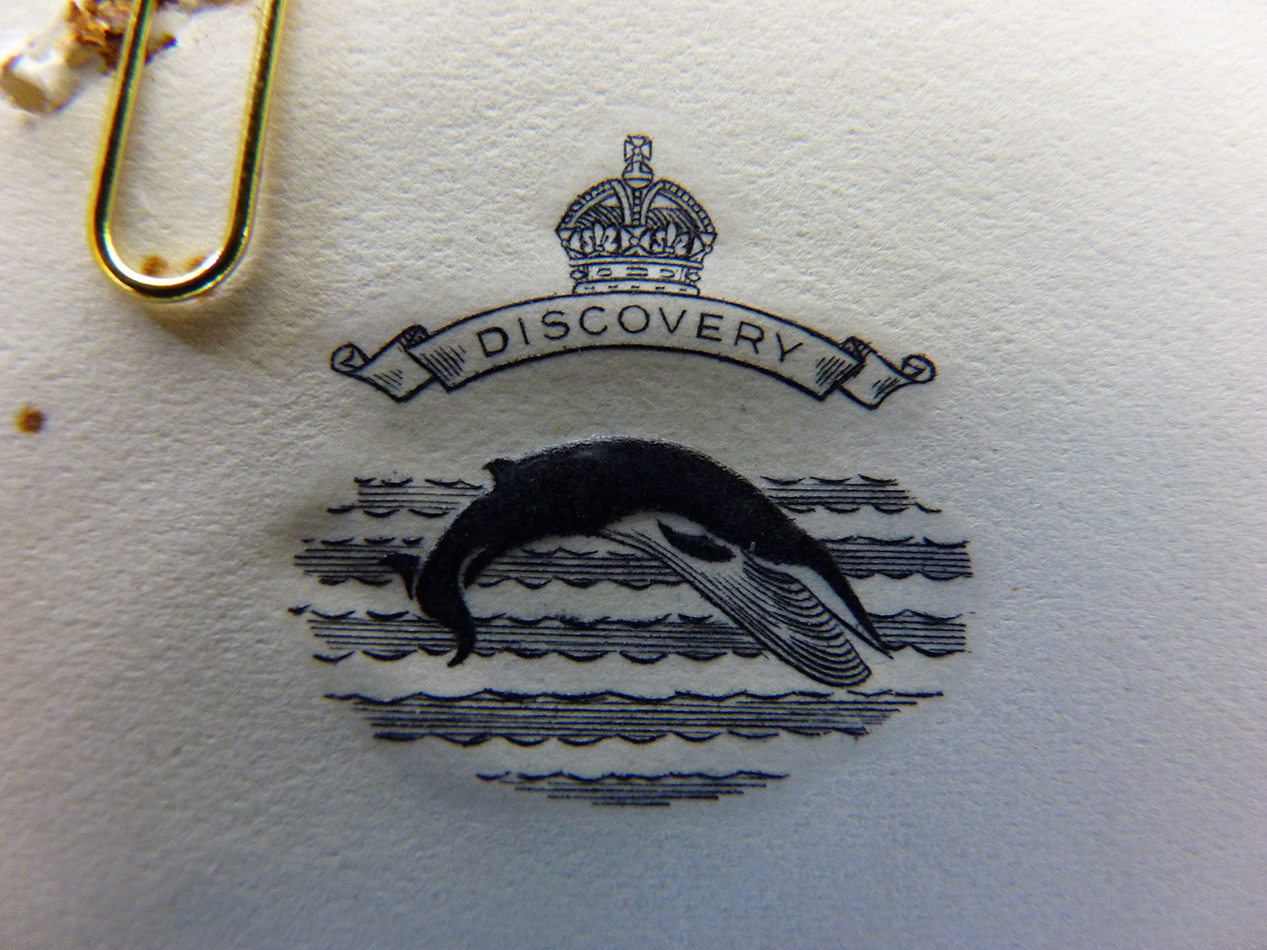
“All previous whaling industries have destroyed themselves. The stock of whales is now being attacked is the last of great economic importance remaining in the world, and only scientific knowledge correctly applied can save the present industry from the fate of its predecessors. The Discovery investigations were initiated in order to provide that knowledge and are rapidly acquiring it.” 1933
For this historical how-to, I want to focus on one part of the collection which is the whaling inspectors’ reports.
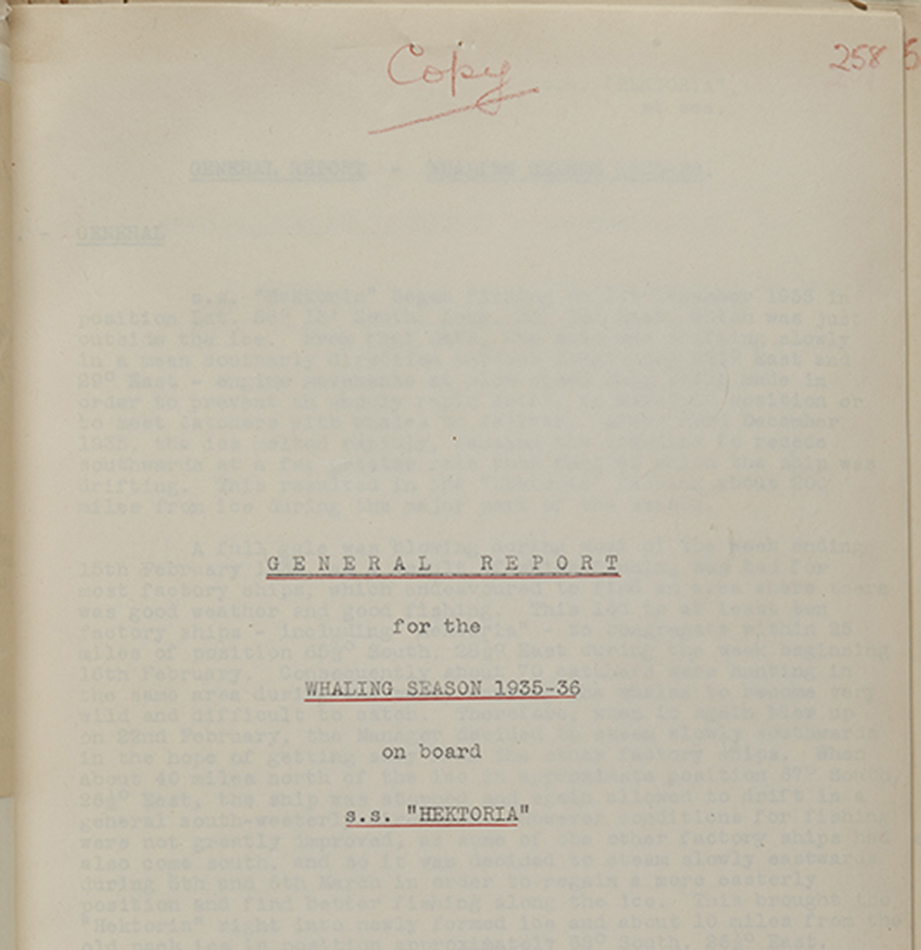
After weeks of sifting through bleak numbers of whales killed between 1920 and 1962, with accompanying charts and statistics, it was nice to come across the whaling inspector reports. These records give more of an insight into what is was like to be on a whaling ship in the southern oceans. Each whaling ship would usually have a whaling inspector appointed by the Ministry of Agriculture and Fisheries to monitor the work of the whalers, comment on the living conditions, make scientific observations and make sure that the whalers were working in accordance with the Whaling Industry (Regulation) Act 1934. These reports played an important role in monitoring the whaling industry in the 20th century. Not only would they monitor the number and sizes of whales being caught, but they would also comment on the welfare of the whalers. What I particularly like about these records is that they offer a small injection of humour in the collection such as;
“[-] is a frail little man with an incredibly small appetite. Indeed he looks as though he might have spent a lifetime in the pursuit of vitamins without ever having caught one. I understand and sympathise with his lack of appetite, for verily the food in this ship is the bread of affliction accompanied, since man cannot live by bread alone, by the sausage of sorrow, the cheese of persecution and the fishballs of flatulence.”
A poor review of the food on board S.S. Hektoria in 1938 (ms36800/1/5/WI/6)
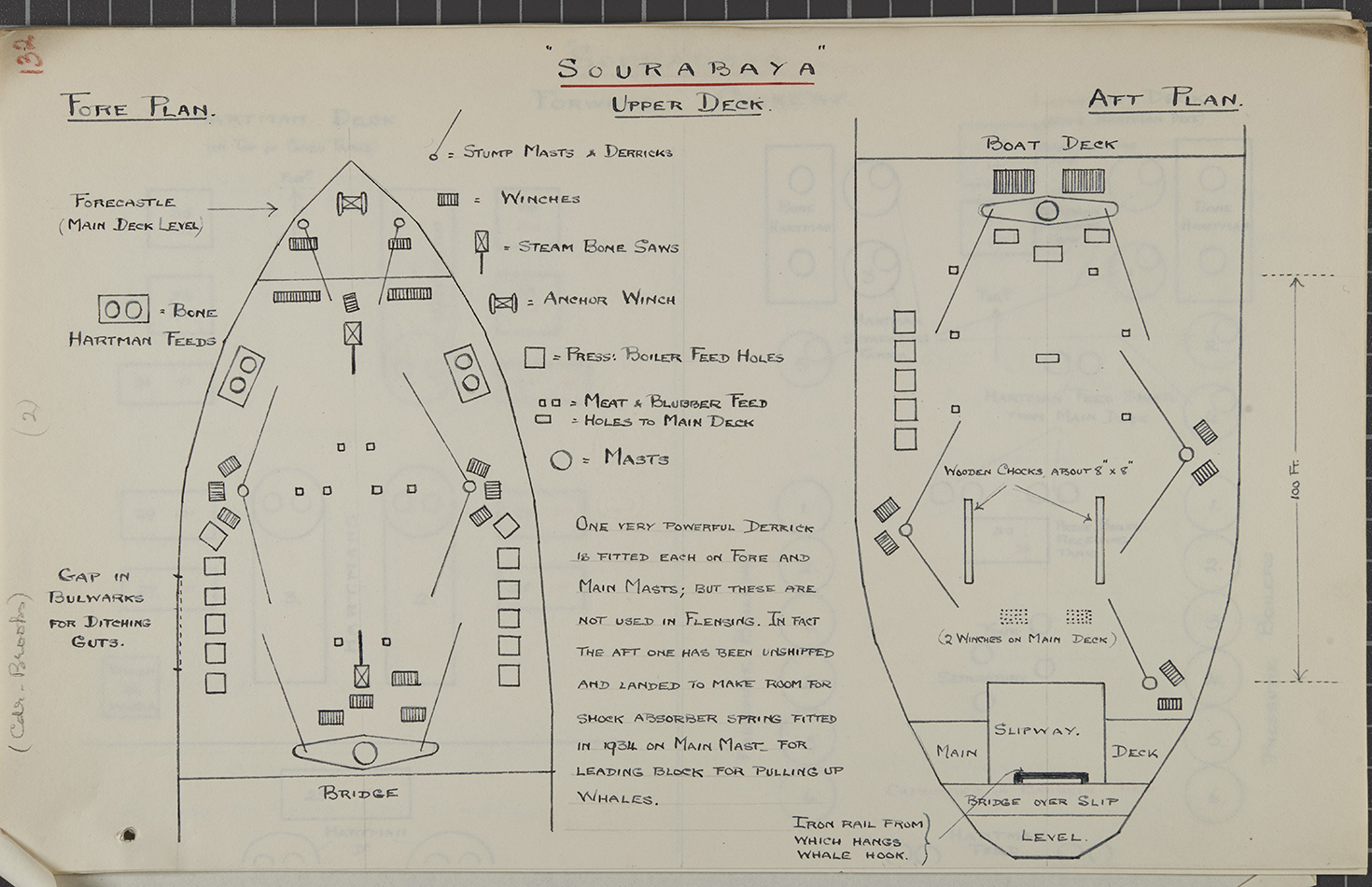
In amongst the whaling inspectors’ reports I kept coming across the same document over and over again, a guide on how to write an inspector’s report. So, using this and examples of reports, I am going to write a report for the Factory Ship Special Collections!
In the pictures below (right click for a larger image), you can see the contents to one of these observation guides. As you can see, the inspectors have some very specific and scientific things to note. For my report I am going to have to adapt and not hunt for whales. Instead, I am going to hunt archives.
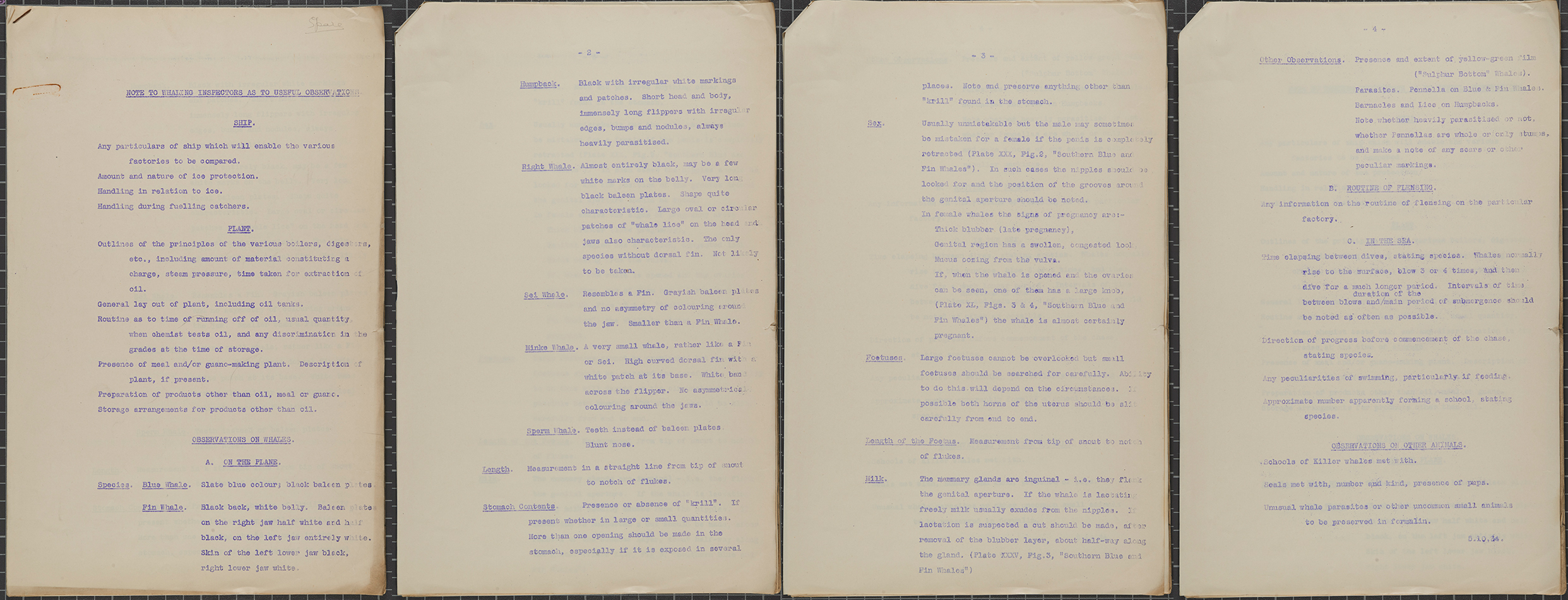
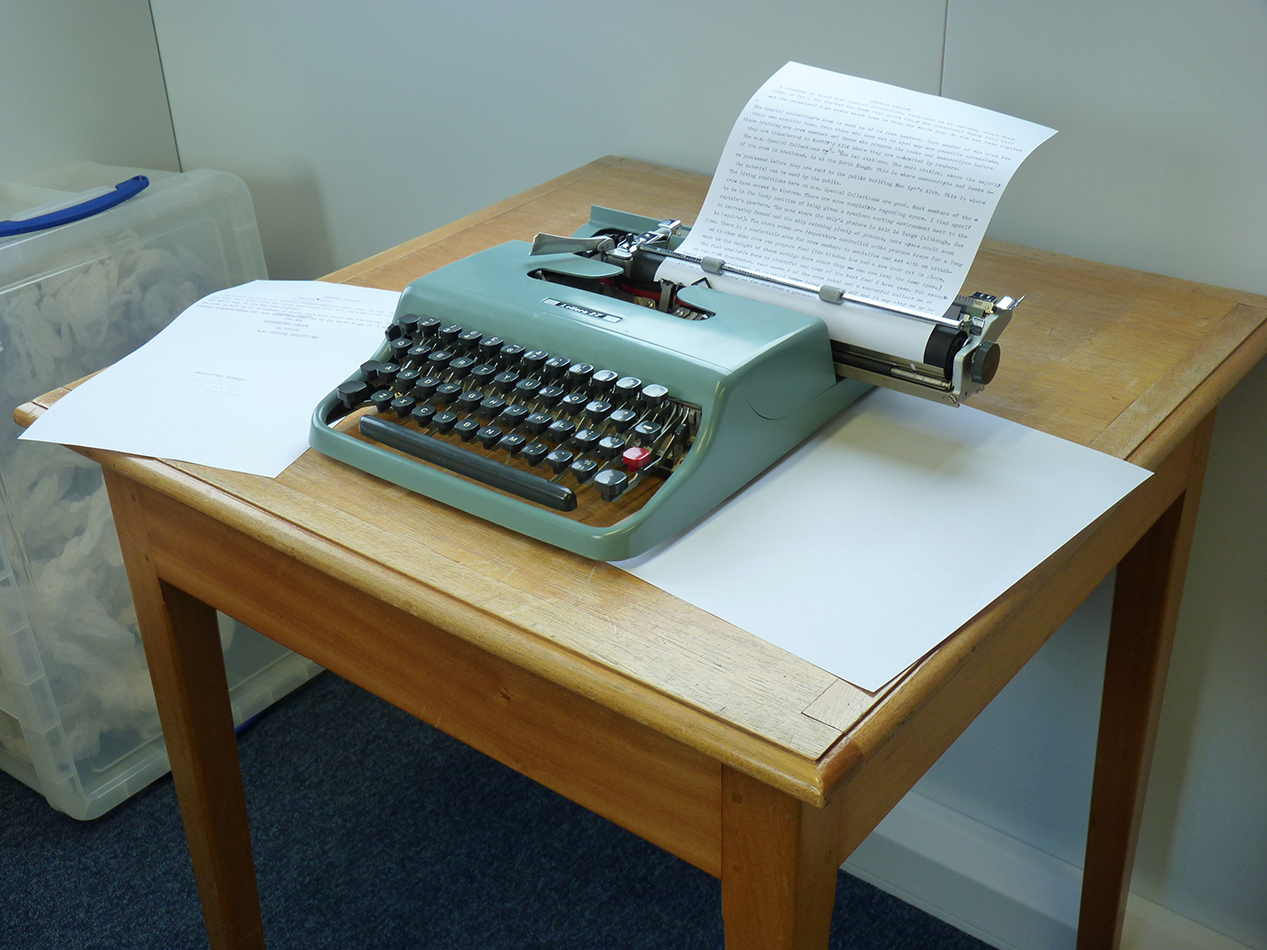
In order to write the report properly, in an historical how-to way, I will be writing my report using a Lettera 22 typewriter instead of cheating and using a type font on a word document. Thankfully I was the only person in the office when I wrote this report so I didn’t upset anyone with the constant clacking of a typewriter. Below you can read my report. *Please be forgiving of the spelling, format and style*
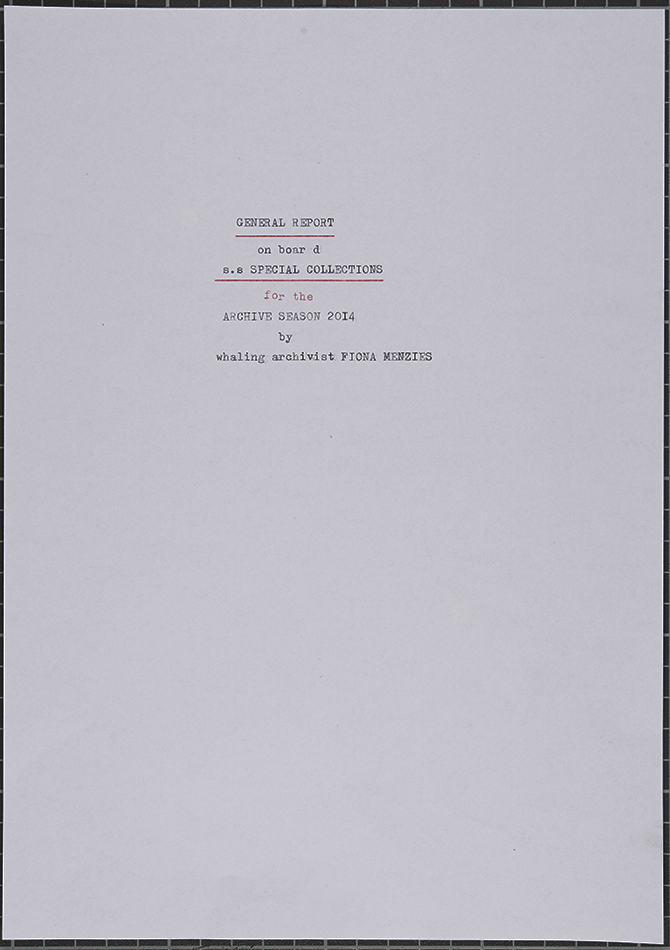
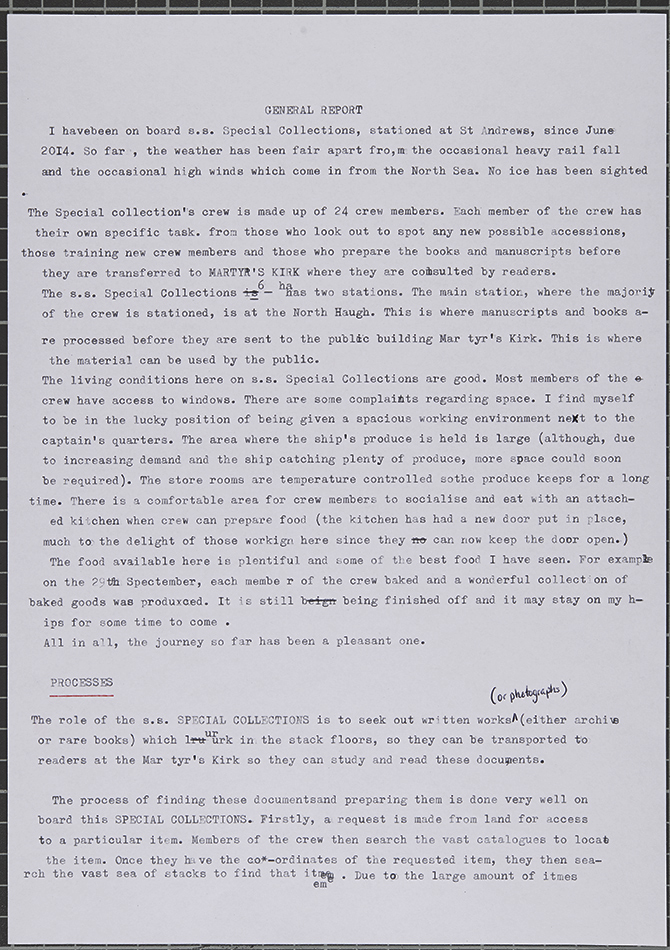
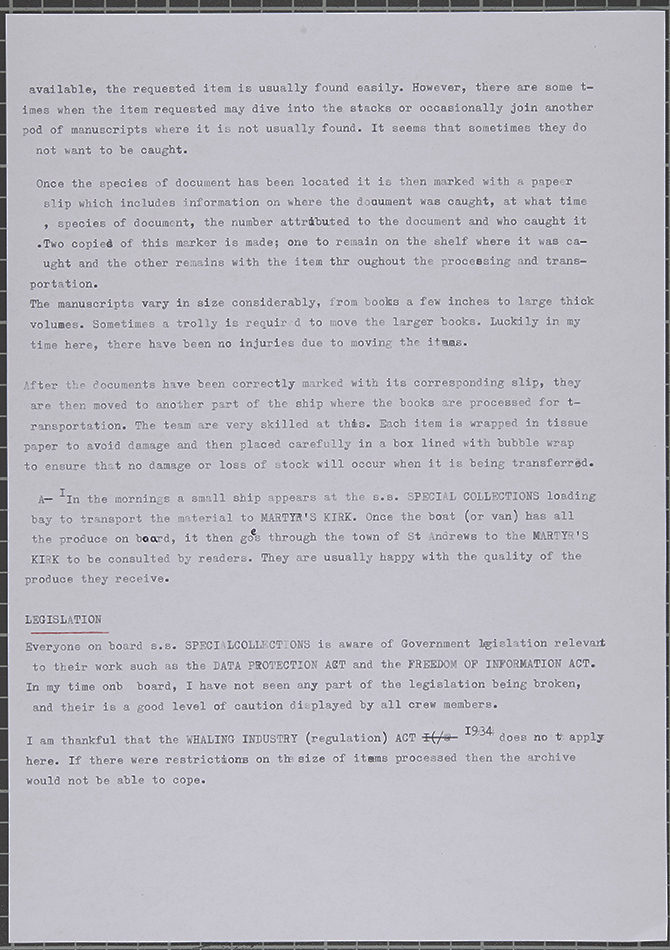
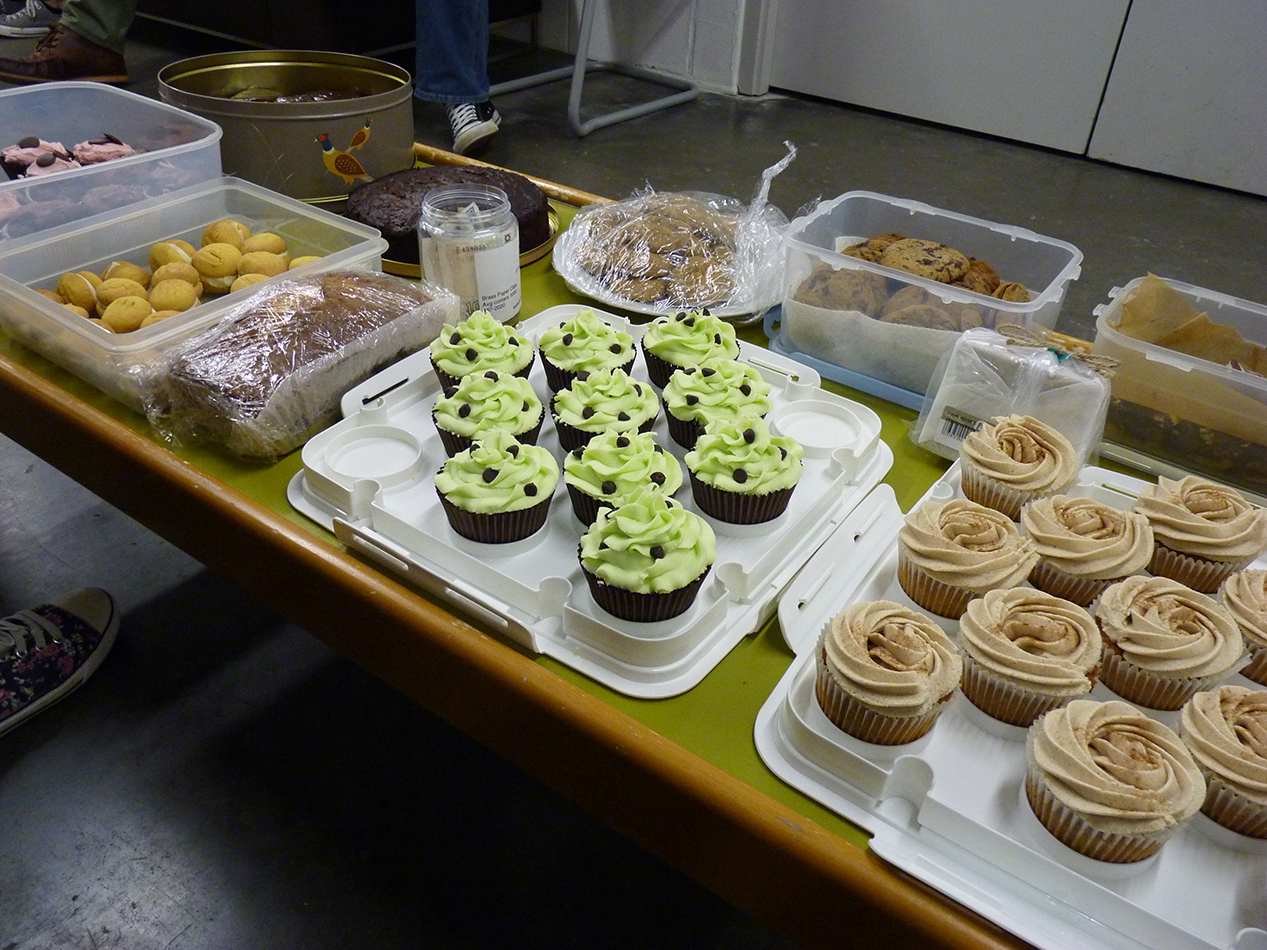
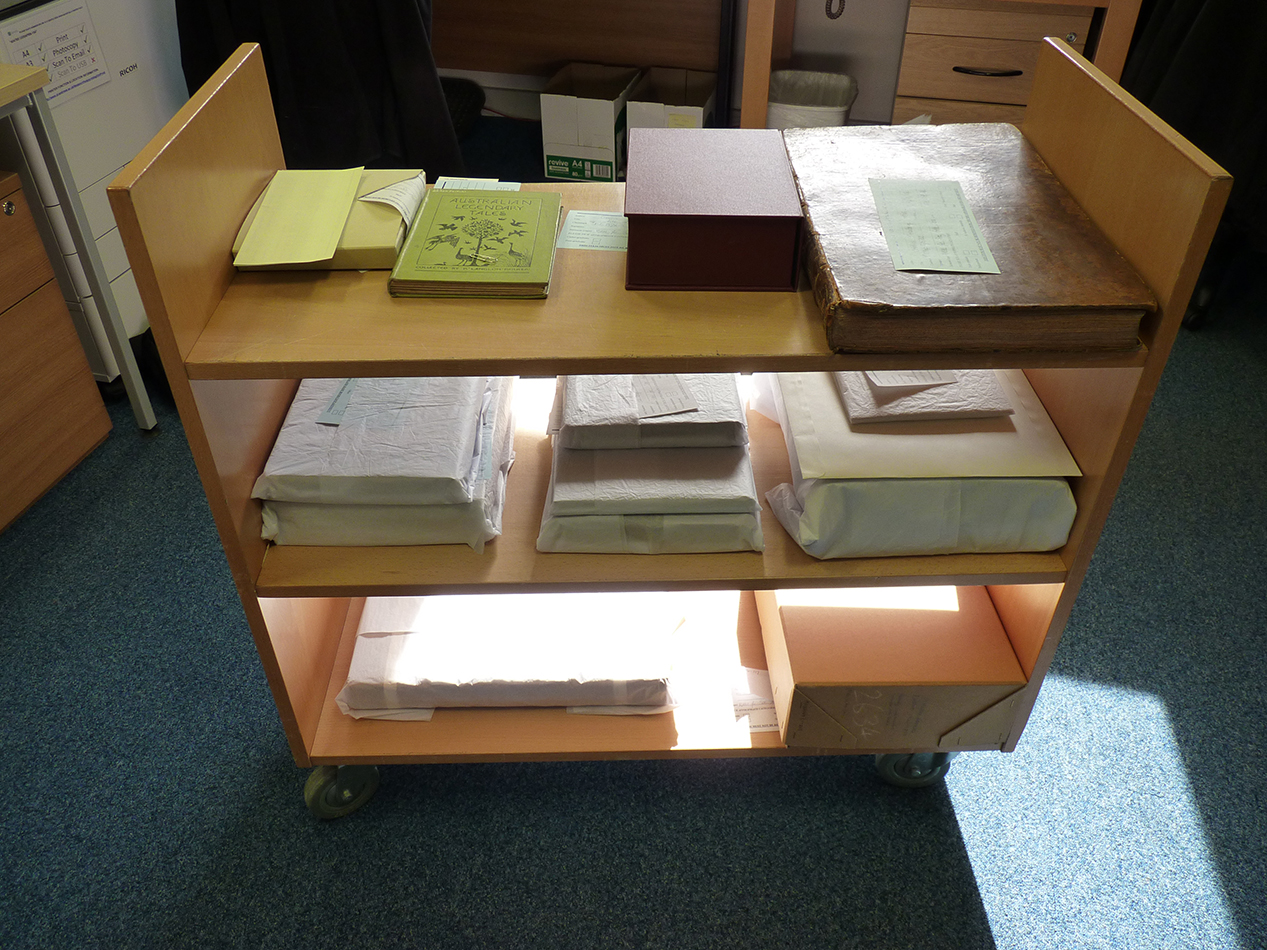
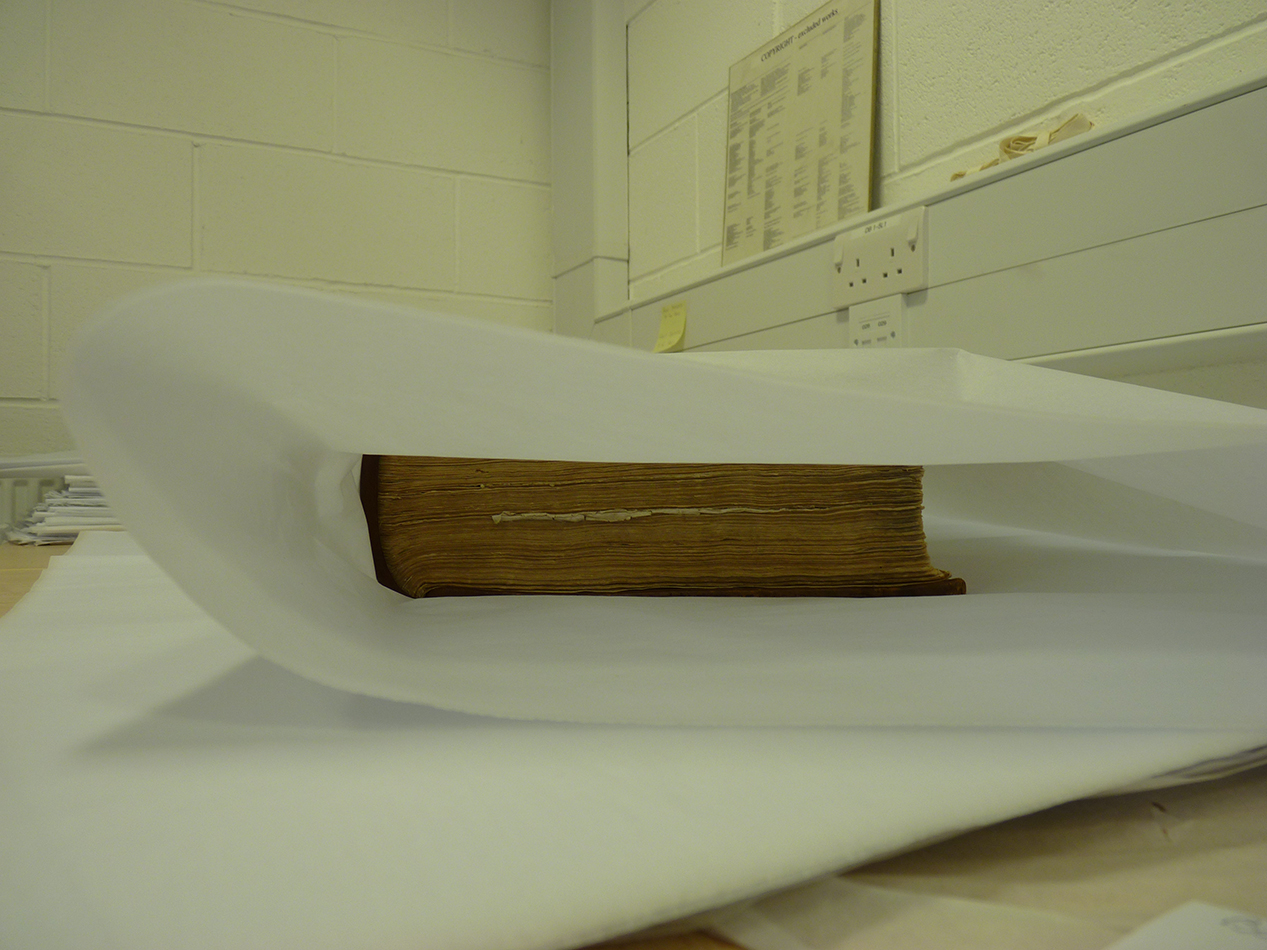
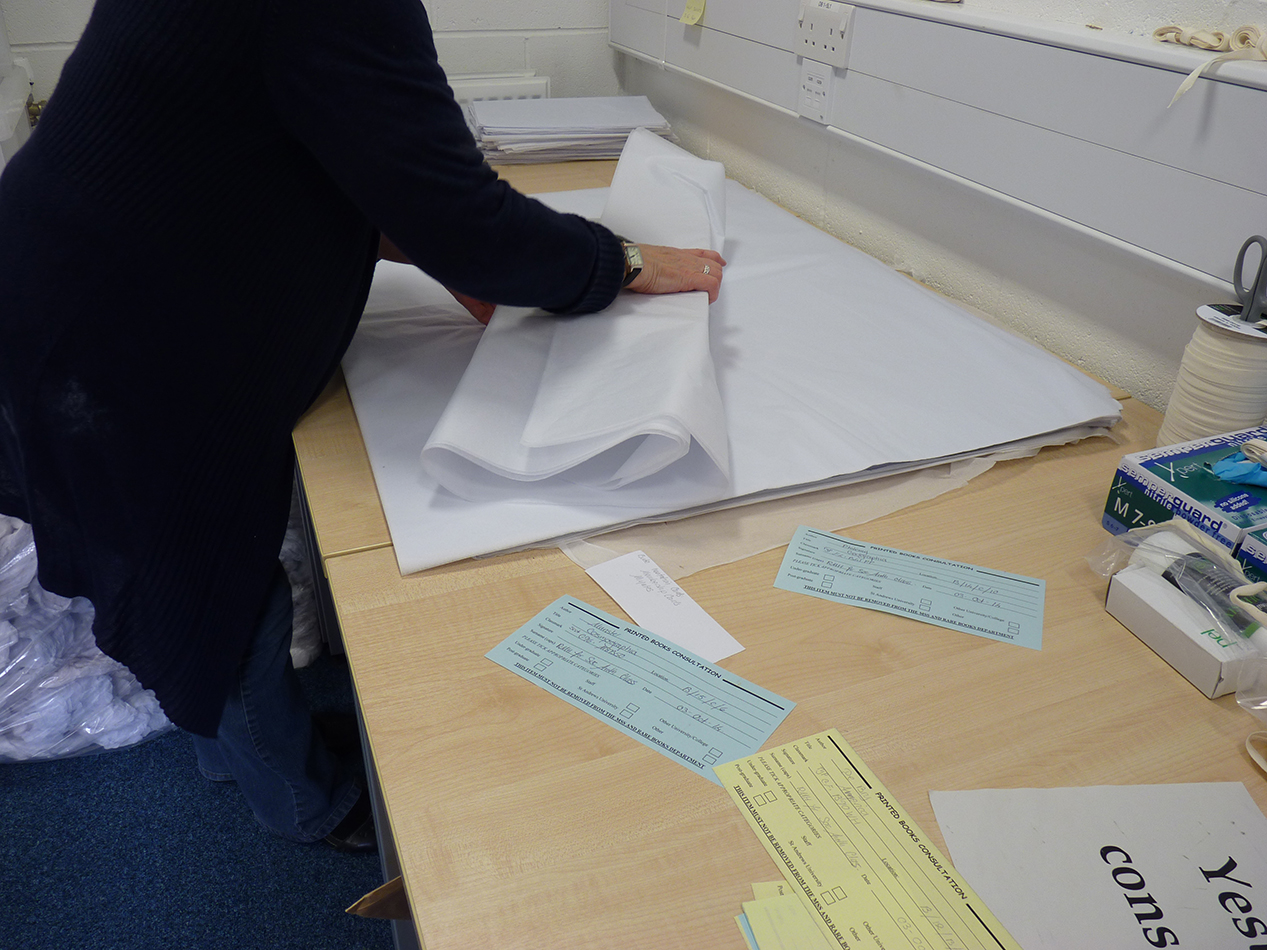
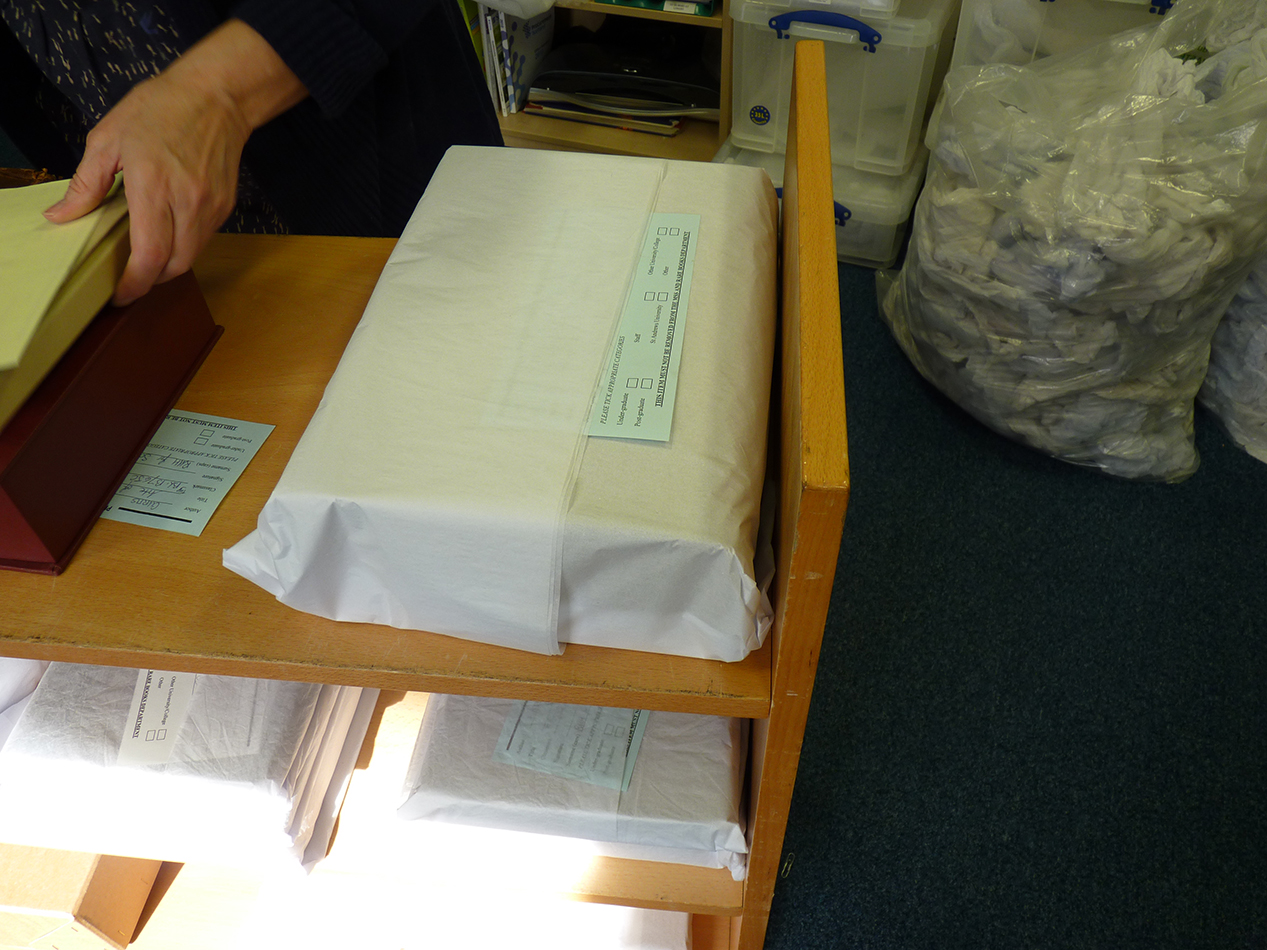
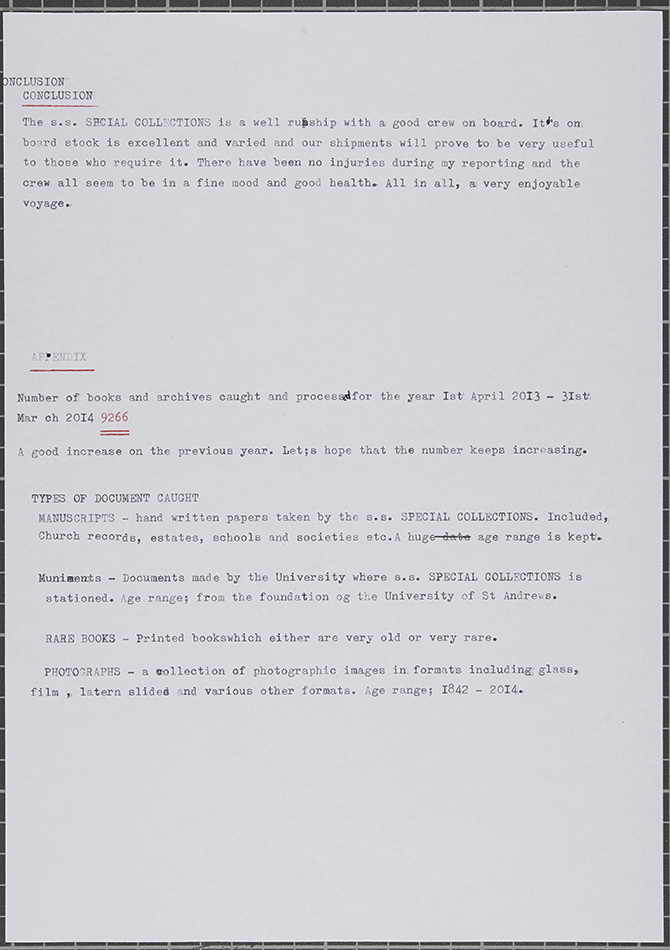
Writing a report like this has taught me a few lessons in how to write a good report. Firstly, make your report clear with headings and underline them. Outline what you want to write about in a similar way to the guide on how to write a whaling report. Sometimes inject some humour, but never too much and thirdly I am not the best typewriter as you can probably tell from the floating letters, the spelling, and the sentences that just don’t make sense. In conclusion, sea sickness aside, I don’t think I would have made a good whaling inspector.
Fiona Menzies
Project Archivist
[…] flensing process. Most of my images have been borrowed from this site. Another useful resource was Echoes from the Vault, a blog about the special collections of the University of St Andrews. For the truly devoted, […]